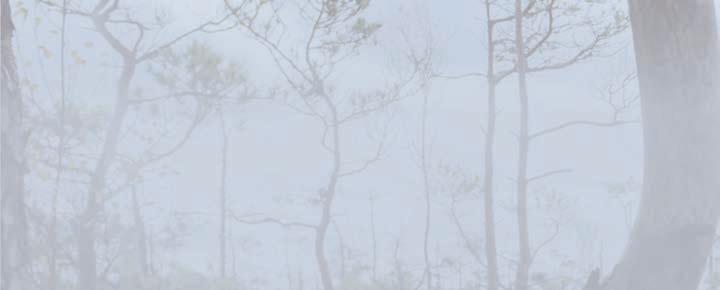
8 minute read
Happy 75th Birthday, Pippi and Moomins!
by Ann-Charlotte Gavel Adams, PhD Professor Emerita, Barbro Osher Endowed Chair of Swedish Studies, University of Washington
Perhaps one of the few good things about the year 2020 is the opportunity to celebrate the seventy-fifth anniversary of the publications of Astrid Lindgren’s Pippi Longstocking (Pippi Långstrump) and Tove Jansson’s The Moomins and the Great Flood (Småtrollen och den stora översvämningen). The anniversary was more than just a commemoration of a couple of beloved figures in Nordic children’s literature. With Pippi Longstocking and the Moomins, the children of the world got—at long last—a literature of their own: books without moral subtext or instruction.
Advertisement
Already in 1900, Swedish feminist and educator Ellen Key predicted that the twentieth century would become “The Century of the Child” (Barnets Århundrade) with her book by the same title. She was right, but it was to take another forty-five years until Nordic children could enjoy fun books written with their needs in mind, absent of moral pointers. Up until the mid-nineteenth century, only children of the upper classes and the nobility learned to read, and they were fed books of manners and morals and biblical stories. When public schooling became mandatory in the mid-nineteenth century, all children had to learn basic skills like reading and writing and doing arithmetic. This created a whole new readership of children from different backgrounds and with diverse interests. The schoolteachers, who wrote these early books for children, focused on proud nationalistic themes, what it meant to be Nordic, the flags, flora, and fauna. Children were to be seen but not heard.
Historically, up until 1945, books for children were still written by adults for the benefit of the adult society: the actual needs and interests of the children themselves were not taken into account. That changed after World War II, when new educational theories from England and the US reached Sweden. Children now became viewed as individuals, separate human beings, to be respected. The child’s need to play and have fun became recognized. Two Nordic authors in particular, Astrid Lindgren and Tove Jansson, stepped up to usher in a wave of literature just for kids.
Pippi Longstocking
Astrid Lindgren (1907–2002) made it quite clear from the beginning that her target audience was children. “I don’t want to write for adults. I want to write for readers who can work miracles,” she said. Her book, Pippi Longstocking, was published in November 1945, and was an immediate success. One newspaper critic called it “a safety valve” (en säkerhetsventil) for children who had felt powerless and whose psychological needs had been suppressed. Another critic called Pippi a combination of Huckleberry Finn and Superman. Not everyone embraced Pippi’s verve—in particular, John Landquist, an outspoken professor of pedagogics and psychology, grumbled and called the book “distasteful and immoral,” predicting Pippi would be quickly forgotten. He could not have been more wrong.
In Pippi Longstocking, children who had grown up feeling repressed and powerless in their war-torn world suddenly had a pint-sized hero who modeled independence and hope. In a letter to her publisher in 1944, Lindgren recognized a certain indebtedness to British polymath and Nobel laureate Bertrand Russel. It was Russel’s book Education and the Good Life (1926), which Lindgren had read in Swedish translation Uppfostran för livet (1933), that described the will to have power as the foremost instinct in human beings. Even children, Russel inferred, had an instinct to want a sense of control. Children were actually suffering from their own lack of power in comparison to older friends and adults. Children needed to indulge in fantasies of having power. In Pippi, Lindgren created a character who had that power, who was totally independent of adults, and did whatever she felt like. This is part of Pippi’s magic.
Lindgren credits her daughter Karin with coming up with the name “Pippi Långstrump.” Karin was sick in bed and asked her mother to tell her a story about a child named Pippi Långstrump—and a wild name required a wild character, Lindgren thought. Pippi is outlandish, and her hilarious ideas and silly antics go against all the proper manners and behaviors taught in earlier children’s books. Reading Pippi Longstocking was a revelation to children of the time, and to this day continue to delight them. Pippi makes children laugh out loud when they read that she pours water on the kitchen floor and ties brushes to her feet so that she can skate while mopping. She makes children giggle when she plays tag with the policemen and chases them up on the roof when they try to take her to an orphanage. Pippi has no parents to restrict her boundaries. She has total freedom and the power to do whatever she wants, and thereby she empowers her young audience to imagine what is or could be possible. Authority figures like policemen and social workers are mercilessly ridiculed. Pippi’s behavior was quite shocking for many contemporary Swedish educators and critics, but Lindgren’s young readers felt a sense of liberation that they had never experienced before.
The “strongest girl in the world,” as Pippi calls herself, is certainly not without morals, as some early critics feared. A guiding theme in the Pippi stories is that if you are very strong, you also need to be very kind. This message resonated with Pippi’s first audience in 1945, just as it does today. Her legacy lives on.

The Moomins
Tove Jansson (1914–2001), the “Mama of the Moomins,” started out as a painter and graphic artist. While she composed some stories as teenager, it was not until after World War II that she started writing the Moomin books. The tales grew out of that dark period in history when World War II left the western world in ruins. During the war, Tove Jansson worked as a political cartoonist, so she was very familiar with the despair and hopelessness of the times. Against this backdrop, Jansson dreamed of a peaceful world and happy society. She brought this world to life in the Moomin books. And though the Moomins’ safe and idyllic world is sometimes threatened by floods, tornados, and comets, in the end, tranquility is restored. A return to happiness and normalcy deserves, of course, to be celebrated with a big party.

The Moomins were born long before Jansson wrote TheMoomins and the Great Flood in 1945. The first Moomin figure was drawn on a wall of the outhouse on the Jansson family’s Baltic summer island in a gra ti dialogue between Tove and her brother, Lars. The name “Moomin troll” was coined by Jansson’s maternal uncle Einar Hammarsten. Jansson lived with the Hammarstens while attending art college. She would often get up at night and raid the pantry. Uncle Einar warned young Tove that the “moo-oomoomin trolls” lived in the pantry and behind the stove in the kitchen. These pantry trolls looked like ghosts with eyes like Sun Maid raisins and they would rub their cold noses on your legs and blow cold air down your neck if you got up in the middle of the night to get a snack from the pantry. Over time, the Moomin trolls grew plumper and cuter until they came to look like little white hippopotamuses—quite different from the original pantry ghosts or the traditional Nordic trolls, which were big and scary if they were Norwegian (Asbjørnsen and Moe), or big, clumsy, and stupid if they were Swedish (Bauer).
The first Moomin book The Moomins and the Great Flood
(Småtrollen och den stora översvämningen) was published just after the end of World War II. It did not receive much attention at the time, and it was not translated to English until 2005. Not until the next two Moomin books—Comet in Moominland (Kometjakten) in 1946 and Finn Family Moomintroll (Trollkarlens hatt) in 1948—did Moomin fever catch on. Here children were introduced to a world of lovable and distinct characters, each with their own flaws and motivations. Jansson said that she wrote the Moomin books for the child in herself, the one that craves adventure and excitement but who at the same time feels powerless and rejected. Like Lindgren, Jansson understood that children can feel powerless, and that they need adventure and excitement; she gave children that sense of power, adventure, and excitement with her Moomins.
What is the magic of the Moomins? It is the deep and complex feelings that Jansson personifies in the different Moominvalley inhabitants—deep feelings that children recognize and can relate to. Children can be scared like the Filliyonk, who never feels safe and is sure that something bad is going to happen. Or they can be intimidated like Ninni, who was so impacted by her insensitive, sarcastic aunt who raised her that she became invisible. Children can be insecure like Sniff, who likes shiny things and would like to get rich so he can afford all the things he does not have. They can also be super cool like Snu in, or outspoken and shameless like Little My, or vain and romantic like the Snork Maiden. Or innocent and trusting like Moomintroll.
In one story, sweet Moomintroll finds the most beautiful golden miniature dragon which he falls in love with and wants to keep all to himself. Moomintroll wants the dragon to love him and only him—but instead the dragon loves only Snu in, and hisses at and bites Moomintroll. What do you do when you want somebody to love you, and they do not? Moomintroll’s story with the dragon communicates with kids on a level they can understand—it becomes a lesson in how to deal with unrequited love and with the pain and feelings of rejection that stem from it.
Though the Moomin series is usually considered as books for children, the stories appeal to adults as well. Jansson’s tales are really allegories, and they are often so sophisticated that they can better be understood on a deeper level by grown-ups. The Moomin figures are not only fictional characters—they are each a personification of human traits and behavior patterns that we recognize in ourselves, in our friends and family, and acquaintances. One popular feature on the Moomin website—“Which Moomin Character Are You?”—tells you which Moomin character you most resemble based on your answers to the personality quiz.
Like Lindgren’s Pippi Longstocking, the everyday experiences of the Moomins become an accessible way for children (and adults) to consider big feelings and real-life experiences, without pushing a moral. Children can relate and comprehend at their own pace, wrestling with adult situations but in the safe and secure fantasy lands conjured up by these two beloved authors.
Pippi and the Moomin trolls, these iconic figures in Nordic children’s literature, may be seventy-five years old today, but they are as alive and kicking today as they were in 1945. Happy birthday, Pippi and Moomins! You may live long but you will never grow old.

Learn more about Pippi Longstocking at astridlindgren.com Learn more about Moomintrolls (and take the character quiz) at moomin.com
FACING PAGE


November
Judith H. Dern fell in love with Denmark on her rst trip to Europe as a college sophomore. After graduation, she returned to Scandinavia for a year to study textiles in Finland and further explore Nordic lands. She has happily returned almost every year since then. Eventually trading textiles for writing, she is the author of four cookbooks, including her most recent title: The Food and Drink of Seattle—From Wild Salmon to Craft Beer. Wandering westward from her East Coast origins, she has lived in San Francisco and is now in Seattle but has constant daydreams of returning to Copenhagen for further culinary adventures.









